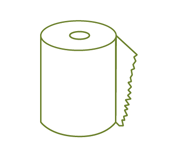PACKAGING COVERED
When we talk about packaging, we are talking about any and all products made from any type of material that are used to contain, protect, move, handle, deliver and present goods, which may be raw materials or manufactured products, from the producer to the end user or final consumer. This definition also includes all “disposable” articles used for the same purpose.
The system managed by Sociedade Ponto Verde only includes non-reusable packaging of goods intended for the domestic market
The system managed by Sociedade Ponto Verde only includes non-reusable packaging of goods intended for the domestic market
TYPE OF MATERIAL
Sociedade Ponto Verde covers packaging of any type of material:

PURPOSE
And all categories of packaging, whatever their purpose:
SALES PACKAGING OR PRIMARY PACKAGING

Any packaging designed so as to constitute a sales unit to the final user or consumer at the point of purchase
Examples: Cereal box, Aerosol, Jam jar, Yoghurt jar, Shampoo bottle, Water bottle, Olive oil bottle, Wine bottle, Beer can, Food tin, Paint can, Milk carton, Sugar packet
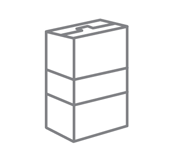
SECONDARY MULTIPACK PACKAGING

Multipacks are packaging (usually paper and/or plastic) that group several individual sales units (with its own barcode) and were designed for sale to the end user.
Certain practical rules have been adopted for the drinks and milk sectors to facilitate the definition of a multipack:
Certain practical rules have been adopted for the drinks and milk sectors to facilitate the definition of a multipack:
Examples: Plastic holding 6 cans of soft drink or beer; Plastic holding 6 cartons of milk; Plastic holding 4 bottles of water or soft drink; Cardboard holding 6 bottles of beer, 6 chocolate milk cartons, 4 yoghurts.
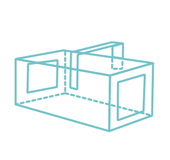
SERVICE PACKAGING EXCLUDING CHECKOUT BAGS

Packaging that is filled or made up by companies, normally traders and retailers and companies in the services or food and beverage sectors, and intended solely for packing products that they sell at their outlets.
Examples: Plastic or paper bags for bread and cakes, Bag for fruit and vegetables sold by the kg, Ready-made food packaging, Packaging for flowers sold by florists, Plastic covering used by laundries to protect clean clothes.
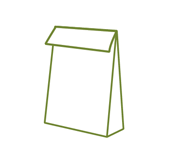
CHECKOUT BAGS

Bags, normally in plastic or paper provided by traders and retailers for consumers to carry products bought on leaving points of sale.
Examples: Plastic bag (provided in hypermarkets)
Paper bag (provided in a clothes shop)
Paper bag (provided in a clothes shop)
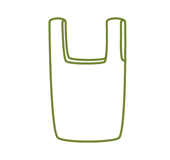
SECONDARY NON MULTIPACK PACKAGING

Any packaging designed so as to constitute a grouping of a certain number of sales units at the point of purchase, whether it is sold as such to the final user or consumer or serves only as a means to replenish the shelves at the point of sale and that can be removed from the product without affecting its characteristics;
Examples: Corrugated cardboard box (containing cereal boxes),
Cardboard tray with retractile plastic (containing jars of jam)
Cardboard tray with retractile plastic (containing jars of jam)

TRANSPORT PACKAGING OR TERTIARY PACKAGING

Any packaging designed so as to facilitate the handling and transport of a number of sales units or grouped packaging in order to prevent damage during handling and transport, excluding containers for road, rail, ship and air transport.
Examples: Non-reusable wooden pallet, Cardboard separators, Plastic straps, Plastic pallet film wrap
